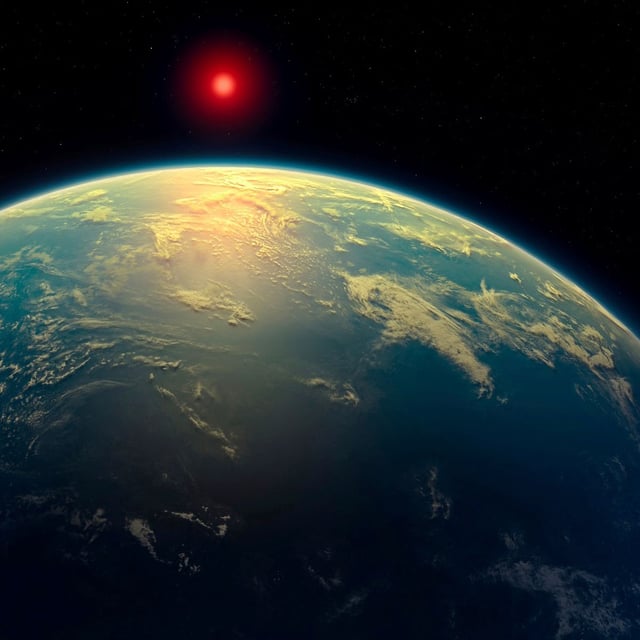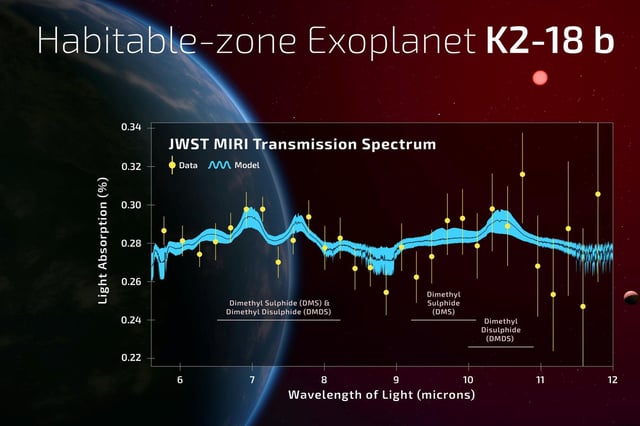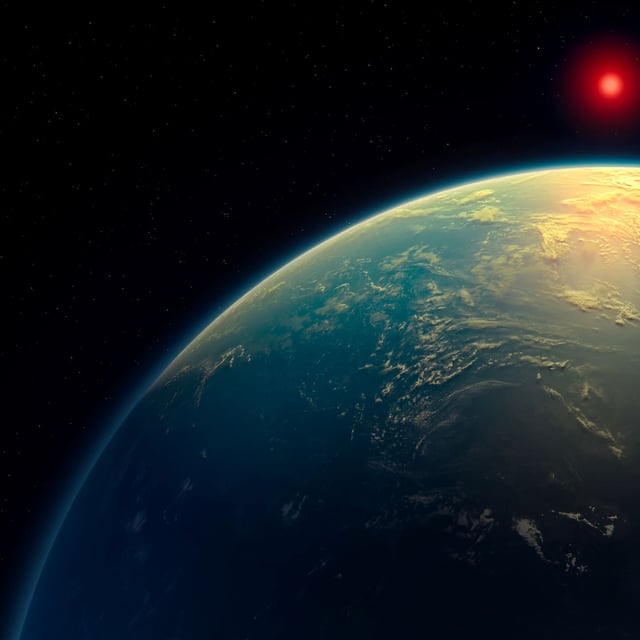Overview
- An international team using the James Webb Space Telescope has detected sulfur-bearing molecules DMS and DMDS in the atmosphere of K2-18b, compounds on Earth typically associated with biological activity.
- The discovery builds on earlier findings of water vapor, methane, and carbon dioxide in the planet's atmosphere, strengthening its potential as a candidate for habitability.
- K2-18b, a super-Earth in the habitable zone of a red dwarf star 124 light-years away, is believed to host a hydrogen-rich atmosphere and possibly liquid water oceans.
- Scientists emphasize that while these results are promising, alternative non-biological explanations for the presence of DMS and DMDS cannot yet be ruled out.
- Further observations and analyses are required to confirm the findings, with researchers cautioning against premature conclusions about extraterrestrial life.



